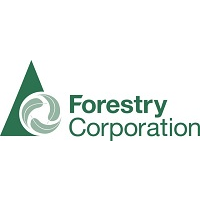

Sustainability, Forestry Management
The Forestry Corporation faced underreporting and delayed reporting of incidents, near misses, and hazards due to ineffective systems. Monitoring incident numbers and corrective actions was difficult, and the broader implications of incidents were often overlooked. This hindered their ability to maintain a consistent safety and environmental focus.
After adopting Riskware, incident reporting became more immediate and accurate with the mobile app. Customisable forms and automated workflows improved safety, compliance, and risk management. The integration of new tools and ongoing support led to better operational efficiency and enhanced safety and sustainability outcomes.

The Forestry Corporation of NSW, established in 1916, manages 2.1 million hectares of state forests, balancing timber production with environmental conservation. Its primary purpose is to protect forests from unmanaged clearing, ensuring the sustainable management of the state's timber reserves. The thriving state forests in NSW provide habitats for a wide variety of native plants and animals, and offer fantastic opportunities for visitors to explore.
Native forest management and its environmental regulations are of significant public interest. Both State and Commonwealth Governments have developed a strong regulatory framework to ensure ecologically sustainable forest management across the landscape. Within this framework, the Forestry Corporation operates under a comprehensive set of regulations designed to balance timber production with environmental considerations, ensuring the sustainability of both the forests and the timber they produce.
Operations in forest environments—such as firefighting and extensive travel—can be hazardous for staff. Consequently, the Forestry Corporation places a strong emphasis on maintaining and improving safety performance.
The Forestry Corporation faced challenges in managing safety and environmental incidents due to limitations with their existing reporting systems. These challenges included:
Before adopting Riskware for incident, near-miss, and hazard reporting in 2015, the Forestry Corporation used two separate systems. Incidents, near misses, and hazards were sometimes unrecorded or reporting delayed, making it challenging to monitor incident numbers or the implementation of corrective actions. Moreover, it was not well understood that incidents could extend beyond safety and environmental issues to include business, reputational, and legal compliance aspects.
In 2015, the Forestry Corporation adopted Riskware as a comprehensive solution for incident, near-miss, and hazard reporting. The user-friendly platform and mobile app enabled staff to capture and report incidents in real-time, even in remote locations.
Increased Reporting: The mobile app facilitated immediate reporting, leading to a greater number of incidents and near misses being recorded.
Customisable Forms: The Visual Designer allowed the creation of forms that captured essential information for incident reporting and regulatory compliance.
Improved Workflow: Automated workflows ensured that remedial actions were recorded and assigned, with notifications and reporting features supporting task completion.
Consistent Risk Assessment: Riskware provided a consistent framework for risk assessment.
Since implementing Riskware, the Forestry Corporation has improved its incident reporting and risk management processes, ensuring a safer working environment and better environmental outcomes. The collaboration with Riskware has enabled the organisation to effectively adapt to new technologies and regulatory requirements while maintaining a strong focus on safety and sustainability.
The Riskware team provided ongoing support and collaboration, incorporating new tools and adapting to the Forestry Corporation's evolving needs while adhering to relevant risk and safety management standards.